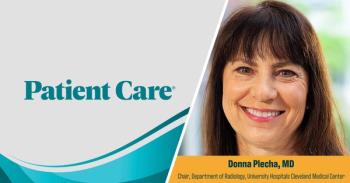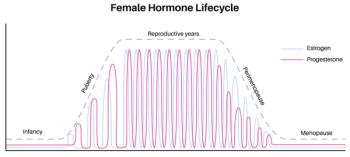
Multiple Risks Affect Developing Brain in Cerebral Palsy
LONDON -- A large study of the causes of cerebral palsy found that mothers had a strikingly high rate of urinary tract or other infections during pregnancy.
LONDON, Oct. 4 -- A large study of the causes of cerebral palsy found that mothers had a strikingly high rate of urinary tract or other infections during pregnancy.
The study that assessed 431 children, including MRIs on several hundred, stressed frequent complex causes of cerebral palsy rather than a single event, such as an obstetrical mishap.
The European investigators homed in on a slew of factors, ranging from maternal infection during pregnancy and brain abnormalities in the infant, to occasional events during birth.
Various studies have reported findings from selected types of cerebral palsy. However, Martin Bax, D.M., of Imperial College London, and colleagues, said they are unaware of any previous studies reporting MRI findings in a large population that included all of the clinical subtypes.
The findings, reported in the Oct. 4 issue of Journal of the American Medical Association, emerged from the European Cerebral Palsy Study, a cross-sectional, population-based study conducted at eight centers. Five hundred and eighty-five children with cerebral palsy, born between 1996 and 1999, were identified, and of these, 431 children were clinically assessed, and 351 had a brain MRI scan at 18 months of age or later.
A striking finding from the mothers' history, Dr. Bax said, was that 39.5% (158 of 400) reported an infection during pregnancy, specifically a urinary tract infection in 19.2%. Of the women, 15.5% reported taking antibiotics during the pregnancy. An independent review of the data concluded that 29.6% of the women had a "significant" infection (excluding minor coughs and cold).
More than half the children (235; 54%) were born at term, while 47 children (10.9%) were very preterm (less than 28 weeks). Of the rest, 69 (16%) were born between 28 and 31 weeks, and 79 (18.3%) were born between 32 and 36 weeks gestation.
In addition, the multiple pregnancy rate was high. Fifty-one children (12%) were known to be from a multiple pregnancy, with 48 from a twin pregnancy and three from a triplet pregnancy. This compares with a population rate of multiple pregnancy of about 1.5%. In some instances, both twins had cerebral palsy and were in the study (four pairs).
Emergency cesareans were performed in 32.3% of the births; 7% had planned cesareans, while 44.8% had standard vaginal delivery, the rest had other procedures.
More than 40% of the children who were born at term spent more than five days in the special care unit and were regarded as significantly ill. Recurrent seizures occurred in 28% of children, hearing impairment in 7.2%, and visual impairment, including strabismus, restricted fields, and refractive errors, in 33%.
At the children's discharge from the special-care infant unit, to which 70% of the children were admitted, 47.3% of the parents said they were unaware that there was concern about their child.
Clinically, 26.2% of children had hemiplegia, 34.4% had diplegia, 18.6% had quadriplegia, 14.4% had dyskinesia, 3.9% had ataxia, and 2.6% had other types of cerebral palsy.
Among children given a clinical evaluation, 351 (81.4%) had a brain MRI scan. The scans, which correlated with the clinical findings, showed that white matter damage of immaturity, including periventricular leukomalacia (PVL), was the most common finding (42.5%). This was followed by basal ganglia lesions (12.8%), cortical/subcortical lesions (9.4%), malformations (9.1%), focal infarcts (7.4%), and miscellaneous lesions (7.1%). Only 11.7% of these children had a normal MRI.
White-matter damage is thought to occur before about 34 weeks of gestation, although 25% of those in the MRI group were born at term, the researchers said. As for the 7.1% miscellaneous lesions, the scan findings did not fit into any of the groups and were accompanied by high rates of other problems, such as epilepsy and visual problems, and may have been due to unidentified genetic abnormalities, the researchers said.
This study has some important implications in relation to possible malpractice suits, the researchers wrote. They ruled out several possibilities as follows:
- Among infants born before 34 weeks, most had white-matter damage, often thought to be caused by obstetric malpractice. Rather, predisposing factors that include genetic factors, nutritional factors, and infections during pregnancy and before the onset of premature labor may lead to placental damage developing throughout the pregnancy. This, in turn, would lead to an increased risk of hypoxic ischemic episodes.
- In the study, 54 children with white-matter damage were born after 34 weeks. These children, together with the 32 children with malformations, again indicating earlier cerebral damage, would not have been affected by perinatal processes.
- Of the other groups, focal infarcts are clearly not caused by obstetric events, and the 25 infants in the miscellaneous group included some infections.
- Of the 41 children with normal MRI results, some infants may have had genetic causes for cerebral palsy, but when there is no evident lesion, it is hard to conceive of an obstetric cause.
Therefore, the investigators said, only 19.9% of a population with cerebral palsy, might be considered on the basis of MRI scans as having some type of obstetric mishap as the cause of their brain damage.
However, the data on the method of delivery show that 26% of the mothers had emergency cesareans, indicating that the obstetrician was well aware that the infant was in difficulty. Although some of these may have had difficulties due to obstetric inattention, many would not, and it seems likely that the proportion of infants who may have been hurt by obstetric malpractice is therefore low, Dr. Bax concluded.
Reviewing the possibilities for prevention, the investigators suggested that more attention be paid to the importance of infections during pregnancy and that despite legitimate concern about overprescription of antibiotics, there should be no question about treating infections during pregnancy.
Twin pregnancies, they said, are another area for prevention. Multiple pregnancies, especially after infertility treatment, should be monitored closely, especially when other risk factors are present.
Because of the lack of warning to parents at discharge from special-care infant units, delayed diagnosis and referral to an appropriate service was common. These findings suggest that at discharge, better arrangements should be made for follow-up of these children, particularly since further brain damage may occur in the wake of nutritional effects.
Finally, they said, the recognition of maternal and child genetic factors in thrombophilia leading to infant stroke is an area in which early identification might lead to prevention and should be investigated further.
Summing up their findings, the researchers wrote that all children with cerebral palsy should have an MRI scan to provide information on the timing and extent of the lesion.
"It is not unreasonable," Dr. Bax wrote, "to assume that with increased awareness of possible preventive measures, over the next decade the rate of [cerebral palsy] could be reduced substantially, thus reducing the burden on families and saving tremendous sums of money for health services."
In an accompanying editorial, Michael Msall, M.D., of the University of Chicago called the report by Dr. Bax and colleagues a "major advance" and emphasized that the neuroimaging data were most informative. To understand the complex causal pathways involved in the cerebral palsy syndromes, large population studies, such as this one, are required, he said.
The key translational question, he wrote, is how to use advances in maternal-fetal medicine, neonatology, and developmental neuroscience to describe the best explanatory mechanisms for these children. Most important, he added, is how to use the best science to understand potential pathways that would decrease the functional severity of the disease.
"By focusing efforts on white matter injury in preterm infants and neuroprotection of term infants with the highest risk of encephalopathy, as well as realizing that a substantial number of term and near-term children do not have a simplistic cause for their motor disability, families can be helped and the general public can understand the need for addressing shortcomings in current knowledge," Dr. Msall concluded.
Newsletter
Enhance your clinical practice with the Patient Care newsletter, offering the latest evidence-based guidelines, diagnostic insights, and treatment strategies for primary care physicians.



























































































































































































































































































